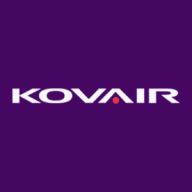

Snowflake and Kovair Data Lake are competitive products in the data management sector. Snowflake holds an advantage with its ease of deployment and pricing flexibility, while Kovair Data Lake attracts enterprises with its rich feature offerings despite potentially higher costs.
Features: Snowflake offers scalability, performance, and integration capabilities, making it a viable option for businesses seeking a seamless data handling experience. Kovair Data Lake provides extensive collaboration tools and advanced data visualization, crucial for detailed analytics tasks. Snowflake focuses on user-friendliness and interoperability, whereas Kovair emphasizes comprehensive data analysis capabilities.
Ease of Deployment and Customer Service: Snowflake is known for its rapid and straightforward deployment process, backed by robust customer support, facilitating swift adoption and minimal downtime. On the other hand, Kovair Data Lake, with its intricate architecture, may take more time to set up but provides extensive customization options and dedicated support channels. Snowflake's simplicity contrasts with Kovair's enhanced customization potential.
Pricing and ROI: Snowflake provides flexible pricing models that cater to various budgetary needs, offering opportunities for quick ROI through cost-efficient scaling strategies. In contrast, Kovair Data Lake may incur higher initial setup costs due to its extensive feature set, which could lead to substantial long-term benefits for businesses needing specialized data capabilities. Snowflake is better for businesses focused on cost control, while Kovair Data Lake represents a strategic investment for those prioritizing feature-rich data management.


Kovair Data Lake is a central database that comes with SQL server support. This makes it capable of storing data from multiple projects residing in diversified tools used by an organization. Based on organizational needs, the stored data is then segregated by departments or business units. Kovair Data Lake also comes with a very intuitive UI interface for managing and monitoring of the Data Lake.
Many organizations use enterprise data warehouses to meet both operational and reporting needs. However, apart from offering a storage and management facilities, there are certain limitations that organizations continue to face. These are –
- Real-time synchronization of data within a centralized data storage
- Traceability and governance of stored data
- Low-cost storage infrastructure compared to Big Data or Data Warehouse
- Handling of low volume but highly diversified data
- Prescriptive analytics that will aid in taking data-driven decisions and on-time service delivery
Kovair has been a market leader in the domain of data integration with a marquee of clients from networking, semiconductor, telecom, manufacturing, banking and finance. Over the recent years, it has witnessed a shift in focus for organizations using multiple tools and different teams. While Kovair Omnibus provides the support for features like traceability, cross tool reporting, and task-based workflow that is simply not enough! Customers today are looking for central data store where data coming from different tools used in an organization could be accumulated in its native format.
Data Lake presents a low-cost alternative to exploding storage and processing costs of traditional warehouses.
While traditional data warehouses store data in hierarchical format. Data Lake offers a central database repository with a flat architecture for storing the data. This protects the data from unwanted manipulation, enabling businesses to take informed decisions accurately and building a better business-customer relationship.
- Large Data Repository for Central Administration
- Tool Extractors with WS/SQL Communication Support
- Web-based Data Lake Portal
More details - https://www.kovair.com/data-lake/
Snowflake is a cloud-based data warehousing solution for storing and processing data, generating reports and dashboards, and as a BI reporting source. It is used for optimizing costs and using financial data, as well as for migrating data from on-premises to the cloud. The solution is often used as a centralized data warehouse, combining data from multiple sources.
Snowflake has helped organizations improve query performance, store and process JSON and XML, consolidate multiple databases into one unified table, power company-wide dashboards, increase productivity, reduce processing time, and have easy maintenance with good technical support.
Its platform is made up of three components:
Snowflake has many valuable vital features. Some of the most useful ones include:
There are many benefits to implementing Snowflake. It helps optimize costs, reduce downtime, improve operational efficiency, and automate data replication for fast recovery, and it is built for high reliability and availability.
Below are quotes from interviews we conducted with users currently using the Snowflake solution:
Sreenivasan R., Director of Data Architecture and Engineering at Decision Minds, says, "Data sharing is a good feature. It is a majorly used feature. The elastic computing is another big feature. Separating computing and storage gives you flexibility. It doesn't require much DBA involvement because it doesn't need any performance tuning. We are not doing any performance tuning, and the entire burden of performance and SQL tuning is on Snowflake. Its usability is very good. I don't need to ramp up any user, and its onboarding is easier. You just onboard the user, and you are done with it. There are simple SQL and UI, and people are able to use this solution easily. Ease of use is a big thing in Snowflake."
A director of business operations at a logistics company mentions, "It requires no maintenance on our part. They handle all that. The speed is phenomenal. The pricing isn't really anything more than what you would be paying for a SQL server license or another tool to execute the same thing. We have zero maintenance on our side to do anything and the speed at which it performs queries and loads the data is amazing. It handles unstructured data extremely well, too. So, if the data is in a JSON array or an XML, it handles that super well."
A Solution Architect at a wholesaler/distributor comments, "The ability to share the data and the ability to scale up and down easily are the most valuable features. The concept of data sharing and data plumbing made it very easy to provide and share data. The ability to refresh your Dev or QA just by doing a clone is also valuable. It has the dynamic scale up and scale down feature. Development and deployment are much easier as compared to other platforms where you have to go through a lot of stuff. With a tool like DBT, you can do modeling and transformation within a single tool and deploy to Snowflake. It provides continuous deployment and continuous integration abilities. There is a separation of storage and compute, so you only get charged for your usage. You only pay for what you use. When we share the data downstream with business partners, we can specifically create compute for them, and we can charge back the business."
We monitor all Data Warehouse reviews to prevent fraudulent reviews and keep review quality high. We do not post reviews by company employees or direct competitors. We validate each review for authenticity via cross-reference with LinkedIn, and personal follow-up with the reviewer when necessary.